
Knowing what keywords to target is crucial for driving organic traffic to your website. This is where head keywords come into play.
These broad, high-volume search terms often consist of one or two words and form the foundation in any website's SEO strategy.
Understanding the significance of head keywords can help your content and web pages to reach a wider audience and rank higher on search engines.
In this article, we will explore what head keywords are, show you how you can find these keywords, and offer practical tips on how to use these terms in your SEO content.
What are Head Keywords?
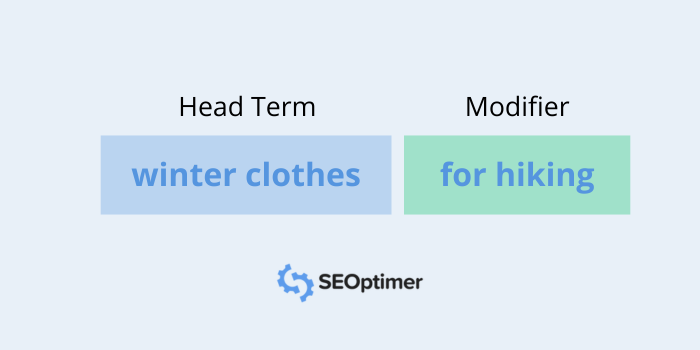
Head keywords are the broad search terms with the highest search volume within a particular niche or industry. Head terms represent the most popular queries that users enter into search engines and are essential for capturing substantial search volume.
Head keywords have certain characteristics that separate them from other keywords such as long-tail keywords or secondary keywords.
These traits include:
- Short Length: Typically one or two words long. Head keywords are usually more general in nature, such as "shoes" or "insurance."
- High Search Volume: Significant potential to drive large amounts of traffic to your site.
- Competitive: Given their popularity, ranking for head keywords can be highly competitive.
An example of a head keyword is "running shoes". It captures a large audience seeking information about running footwear, but doesn't specify brand, type, or intended use.
The pages that rank for these keywords tend to be category pages for eCommerce companies or sports apparel brands like Nike or Adidas.

Of course, Google also generates an AI Overview defining what running shoes are, and giving suggestions on how to choose the best running shoe.
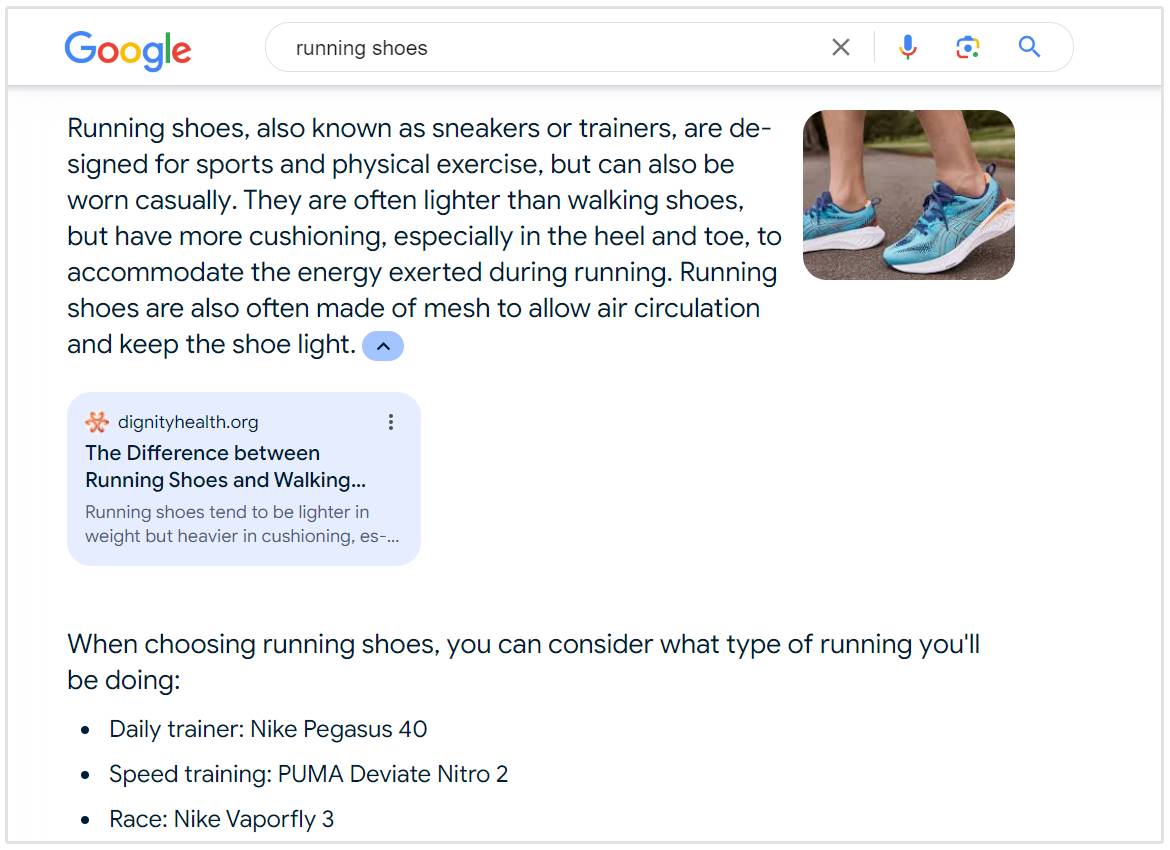
Because of their broad nature, head terms often face steep competition from established websites and brands, so newer websites and businesses should focus more on secondary keywords or niche keywords that have lower competition.
Head Keywords vs Long-Tail Keywords
Long-tail keywords are more specific and longer phrases that users enter into search engines.
Unlike head keywords, which are broad and general, long-tail keywords often consist of three or more words. These keywords are highly targeted and cater to niche audiences, driving more precise search results.
Here's a breakdown comparing the differences between head keywords and long-tail keywords:
Search Volume and Competition
Head keywords typically have a high search volume due to their general nature, such as the term "shoes."
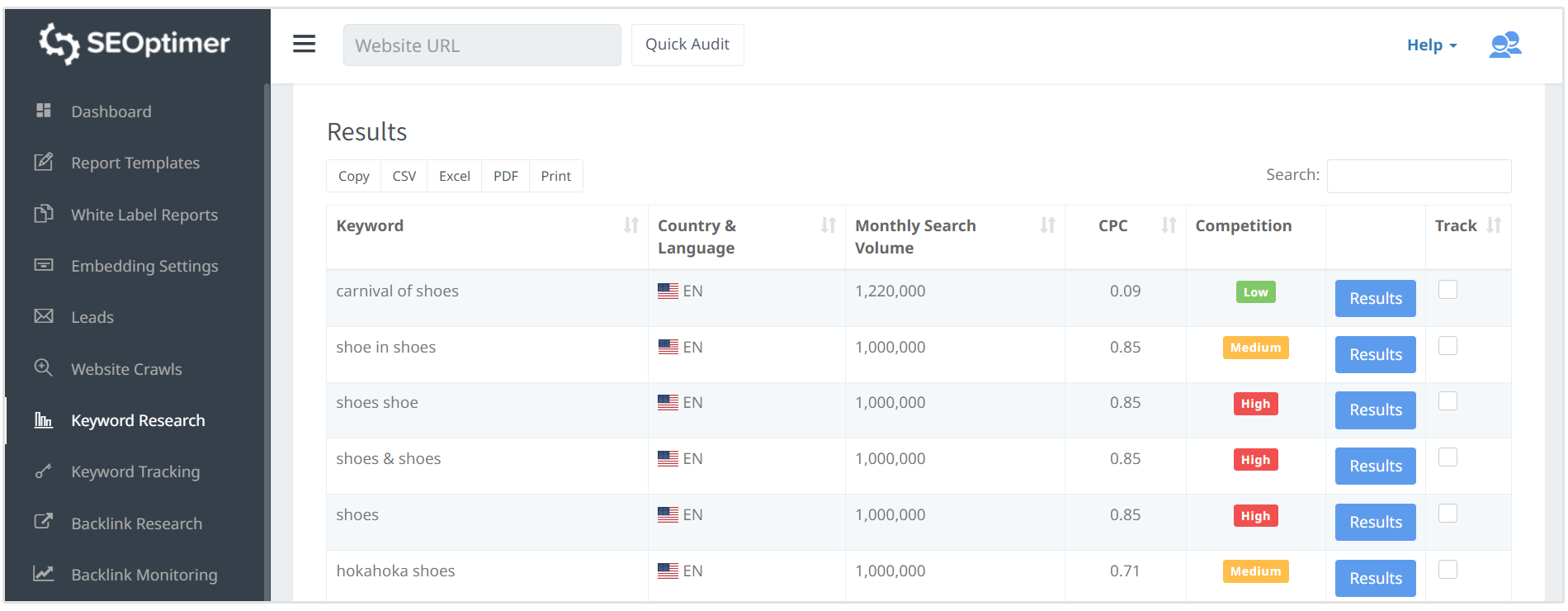
As you can see in the above screenshot, the search volume for the keyword “shoes” in the United States is very high.
In contrast, a long-tail keyword like "women’s white running shoes" has a lower search volume but is more targeted.

This specificity makes long-tail keywords less competitive than head keywords, offering better opportunities for smaller or newer websites to rank effectively on search engines.
While head keywords are often dominated by major brands and come with high competition, long-tail keywords provide a more level playing field.
Conversion Rates
The conversion rates differ significantly between these two types of keywords. Head keywords generally have lower conversion rates as they attract a broad audience with varying intents.
On the other hand, long-tail keywords tend to have higher conversion rates because they align closely with user intent, capturing specific needs and leading to better engagement and conversions.
User Intent
User intent also varies between head terms and long-tail keywords.
Head keywords usually indicate a general intent, often used for initial research or exploration.
In contrast, long-tail keywords reflect specific intent, typically employed when users are closer to making a decision or purchase.
While both head keywords and long-tail keywords have their benefits and drawbacks, a successful SEO strategy should incorporate both types of keywords to maximize reach and effectiveness.
How to Find Head Keywords
There are several ways to find head keywords for your blog posts and web pages. In this post, we're going to show you how to find these keywords using Google's Keyword Planner tool, as well as SEOptimer's Keyword Research tool.
Find Head Keywords Using Google Keyword Planner
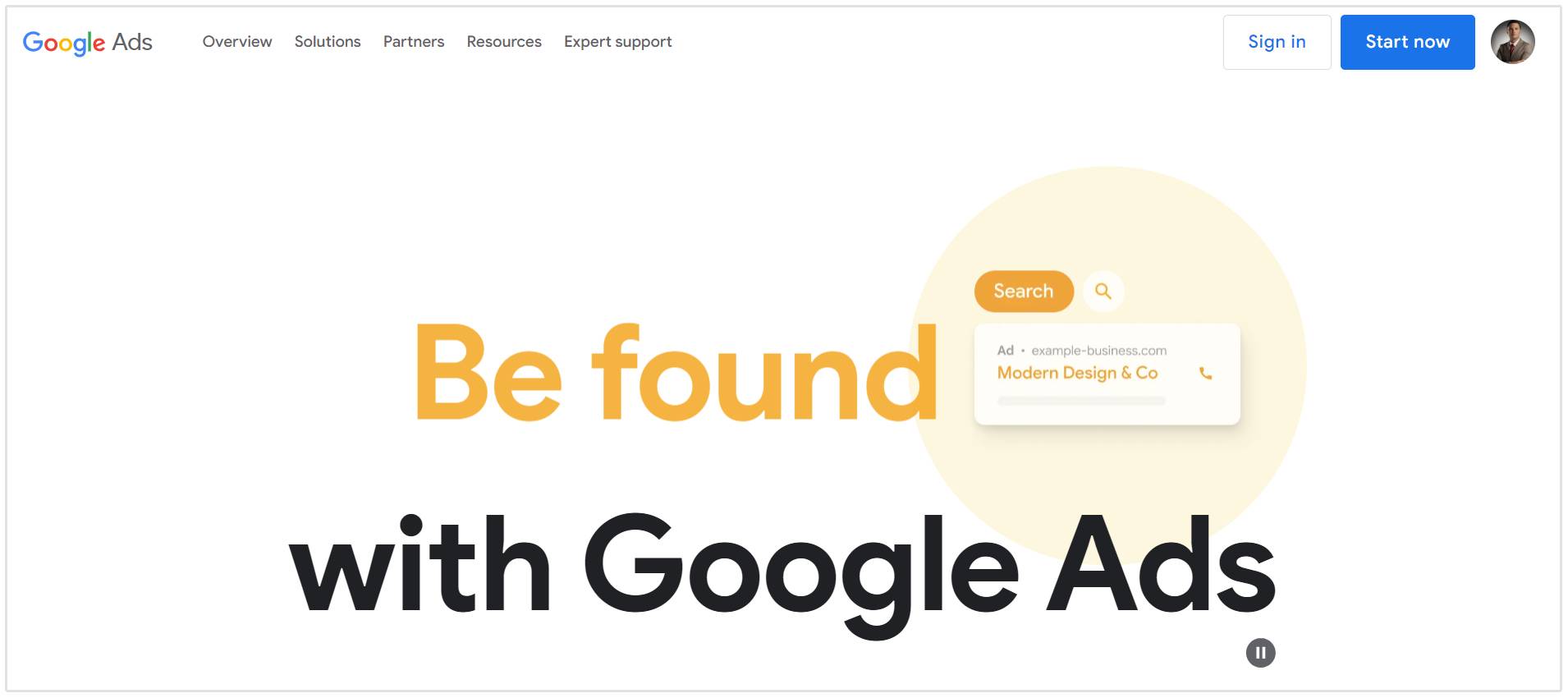
- Accessing Google Keyword Planner: Start by signing in to your Google Ads account. If you don't have one, you can create an account for free.
- Navigating to Keyword Planner: Once logged in, click on the "Tools & Settings" tab in the upper right corner and select "Keyword Planner" from the drop-down menu.
- Discover New Keywords: Choose the option to "Discover new keywords." Enter a broad term related to your industry or niche to get started.
- Analyzing Results: The tool will generate a list of keyword ideas based on your input. Look for short, high-volume keywords that align with your content goals. These are your potential head keywords.
Find Head Keywords Using SEOptimer's Keyword Research Tool
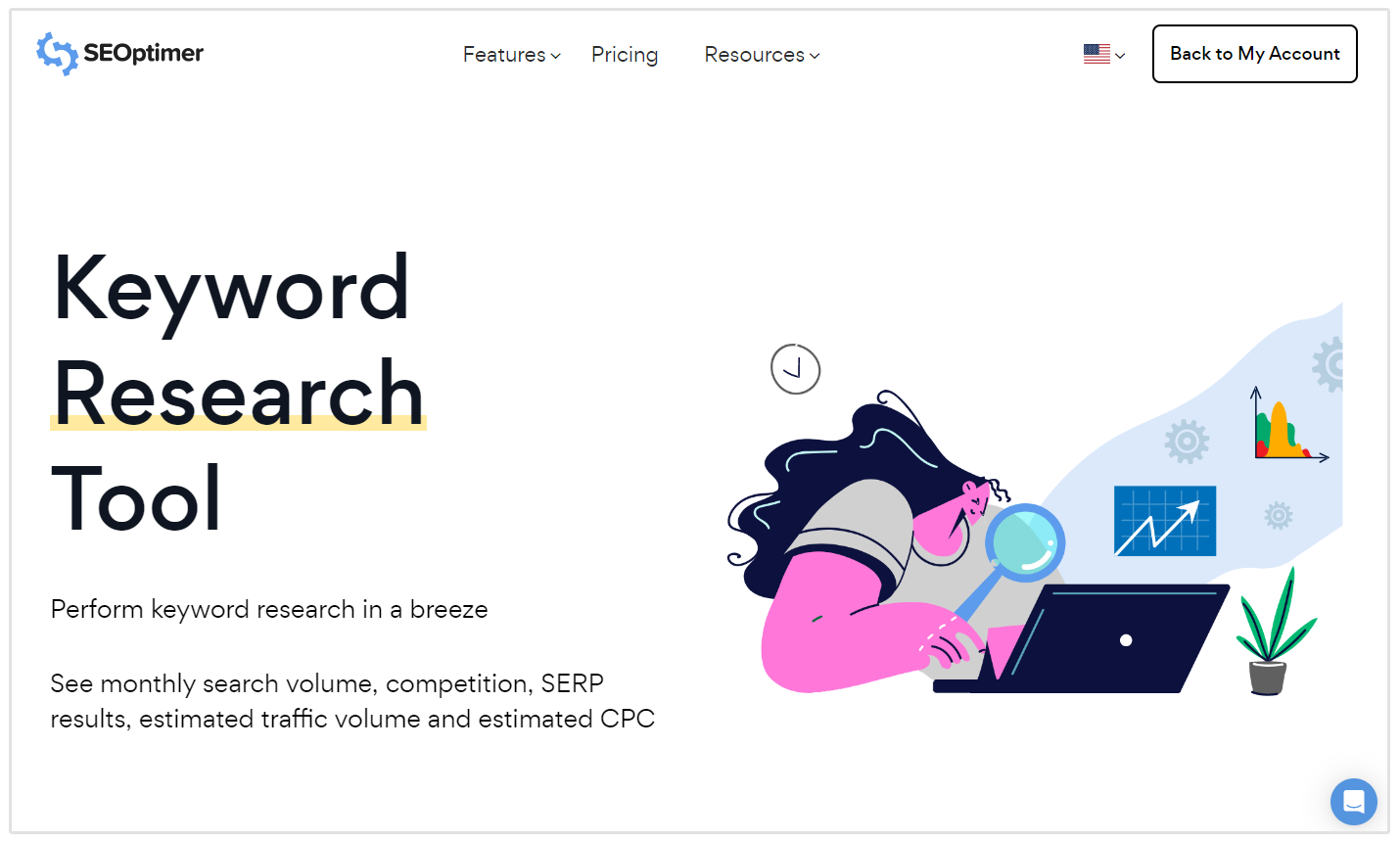
In addition to Google Keyword Planner, you can also use SEOptimer's Keyword Research tool to find these head keywords.
Here are the steps to find head keywords with our keyword research tool:
- Accessing SEOptimer: Navigate to the SEOptimer website and sign up for an account if you haven't already. The tool offers both free and paid versions, with varying levels of access to features and data.
- Initiating Keyword Research: Once logged in, go to the "Keyword Research" tab on the left. Enter a broad term related to your business or industry to begin generating keyword ideas.
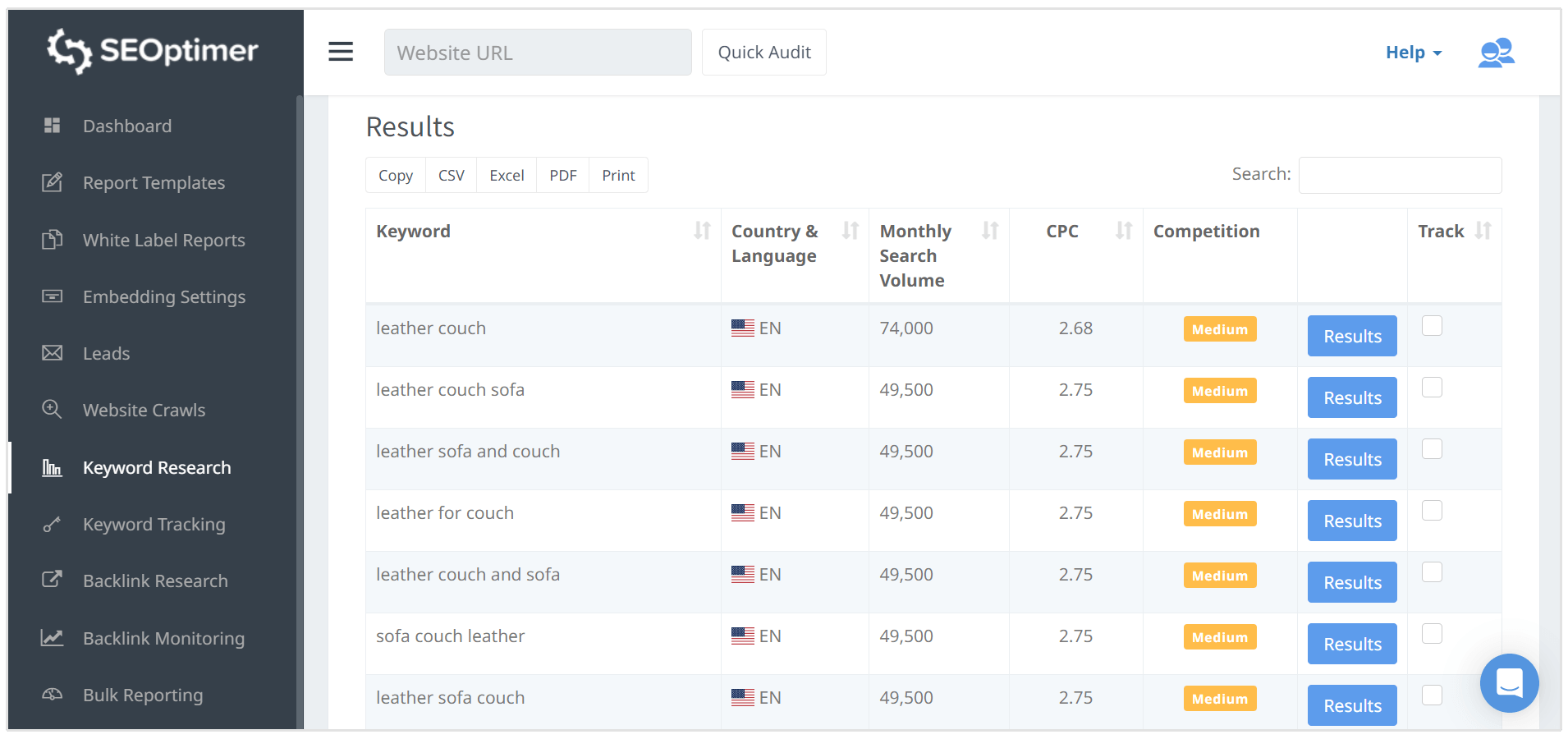
- Analyzing Results: SEOptimer will produce a list of keywords associated with the keyword you added. Focus on identifying short, high-traffic terms that could serve as head keywords. For instance, let’s imagine you’re selling leather couches online. You could just use “leather couch” as a head keyword, but you could also use “leather sofa couch”.
- Evaluating Key Metrics: Pay attention to essential metrics such as search volume, keyword difficulty, and competition level. High search volume indicates strong potential for driving traffic, while Competition helps you gauge the effort needed to rank for those terms.
How to Use Head Keywords in Your SEO
Adding head keywords in your SEO content can significantly boost your website’s visibility and drive organic traffic. But there's a right way and a wrong way to go about this.
For instance, a common mistake new SEOs make is to stuff their blog posts with head keywords, with the aim of improving search rankings.
This could result in an unpleasant user experience and lower keyword rankings.
So how do you use head keywords in the right way?
Title Tags and Meta Descriptions
Ensure your head keywords are placed in the title tags of your web pages, preferably as close to the beginning as possible. This not only grabs the attention of search engines but also improves click-through rates from users.
Also remember to include head keywords in meta descriptions to provide a concise summary of your page content. This helps search engines understand the relevance of your page and encourages users to click on your link.
Headings and Subheadings
Use head keywords in your H1 tags to clearly define the primary topic of your page and include them in other headings (H2, H3, etc.) to create a logical and easy-to-follow structure for both readers and search engines.
Body Content
Integrate head keywords within the body content of your blog posts. Like with the title tags, try to use them early in the text to signal relevance to search engines.
And remember to maintain a natural flow to avoid keyword stuffing, which can harm your SEO efforts.
URL Structure
Write URLs that include head keywords. A clean and descriptive URL structure not only aids in SEO but also enhances user experience by providing clear indications of the page content.
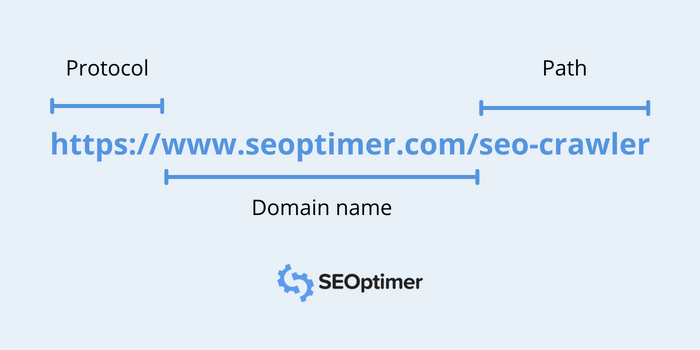
Image Alt Text
Optimize images by including head keywords in the alt text. This practice improves the accessibility of your site and provides additional SEO value by helping search engines index your images correctly.
Internal Links
Use head keywords as anchor text in internal links to guide users and search engines to relevant content across your site. This enhances site navigation and strengthens the keyword relevance of linked pages.
Content Quality
Create high-quality, informative content that naturally incorporates head keywords. Engaging and valuable content is more likely to be shared and linked to, enhancing your SEO performance.
Wrapping Up
Head terms offer great potential for driving significant organic traffic to your website.
By understanding what head terms are, how to find them and use them within your SEO content, you can unlock their true potential.
Remember, SEO is a marathon, not a sprint. Focus on creating high-quality content that caters to your target audience's needs, and watch your head term-powered SEO strategy flourish over time.










